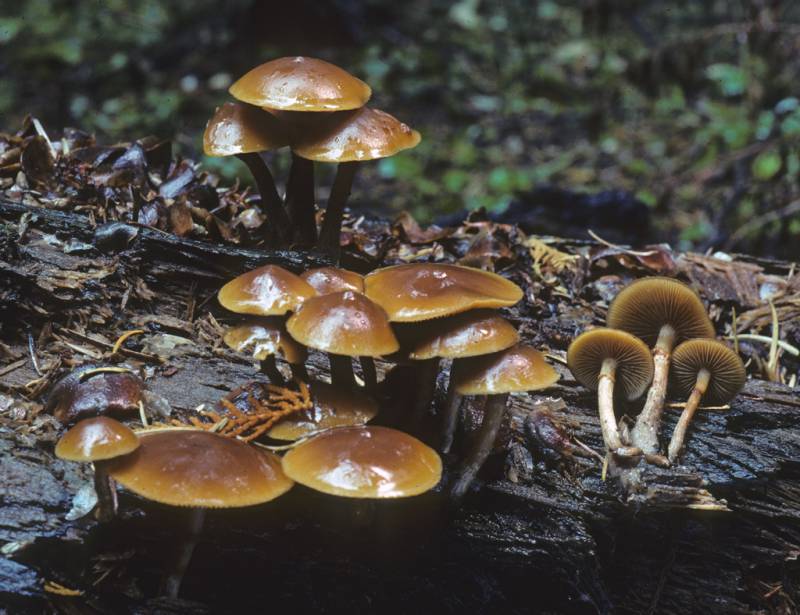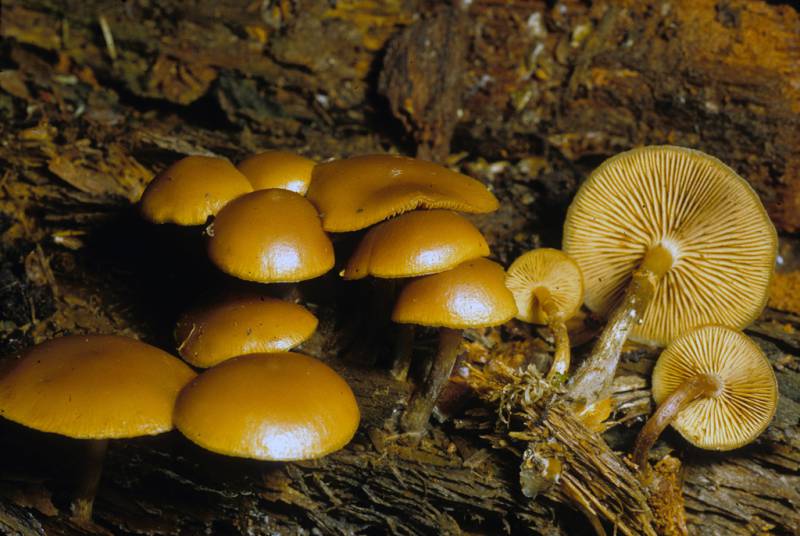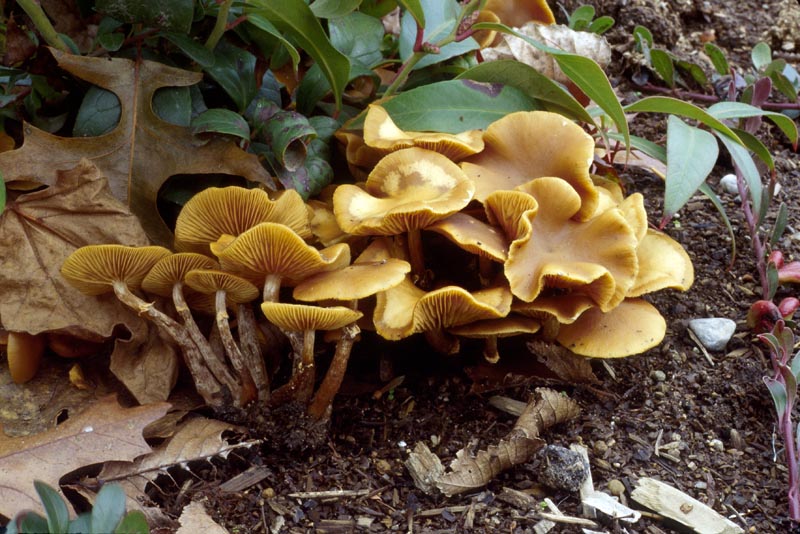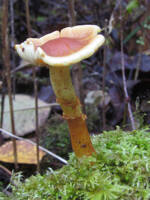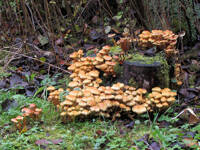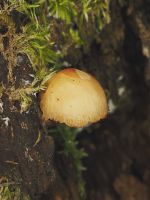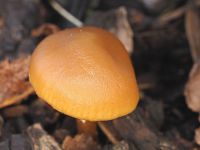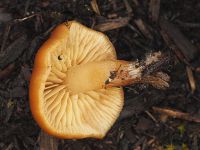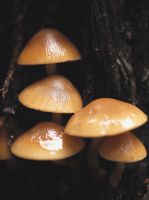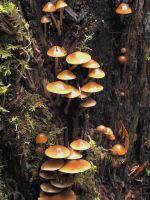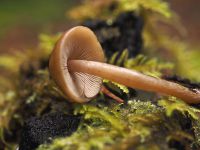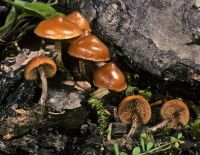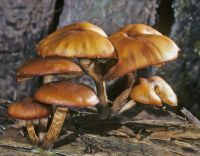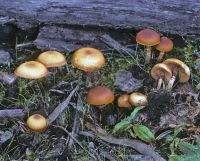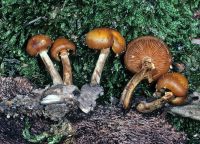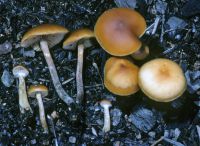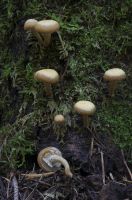Habitat: It occurs on stumps and logs of conifers and hardwoods, or grows from pieces of buried wood, wood chips, or other woody debris.
Conservation Status: Not of concern
Galerina marginata is a medium-sized species with a dome-shaped, brown to yellow-brown cap that is smooth, slightly viscid to moist, striate along the edge when fresh, and fades to tan or buff. The gills and stipe are brown, and the veil sometimes leaves a fibrillose ring-zone on the stipe. The fruitbodies often occur in clusters or groups but can be scattered or solitary as well. Several names have been applied to this mushroom in North America, including G. autumnalis, probably the most familiar name, G. venenata , and G. unicolor. By any name it is just as deadly, containing the same toxins found in Amanita phalloides. Thus, mushroom-hunters need to be aware of G. marginata, especially those in search of magic mushrooms, as at least one death and several close calls have occurred in our region as a result of mistaking it for a psychoactive species such as Psilocybe stuntzii. It could also be mistaken for a honey mushroom, although it is usually much smaller and has brown, not white spores.
Mushroom-hunters need to be aware of G. marginata, especially those in search of magic mushrooms, as at least one death and several close calls have occurred in our region as a result of mistaking it for a psychoactive species such as Psilocybe stuntzii. It could also be mistaken for a honey mushroom, although it is usually much smaller and has brown, not white spores.
PNW Herbaria: Specimen records of Galerina marginata in the Consortium of Pacific Northwest Herbaria database
CalPhotos: Galerina marginata photos

